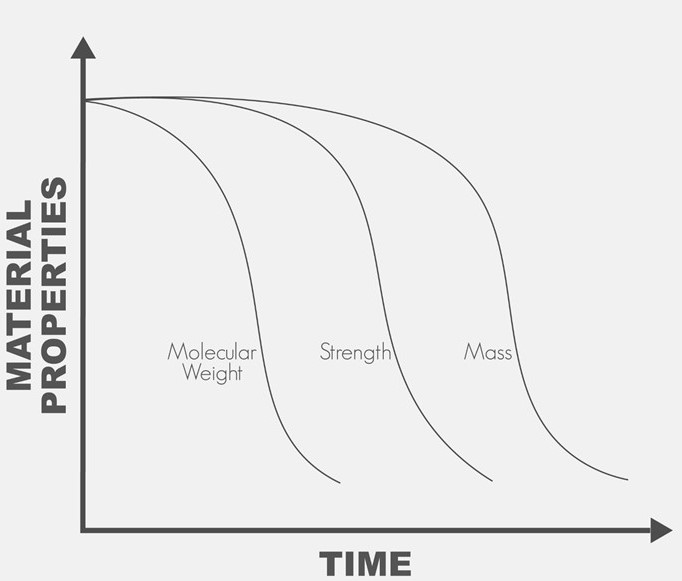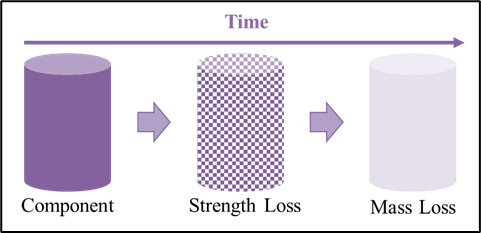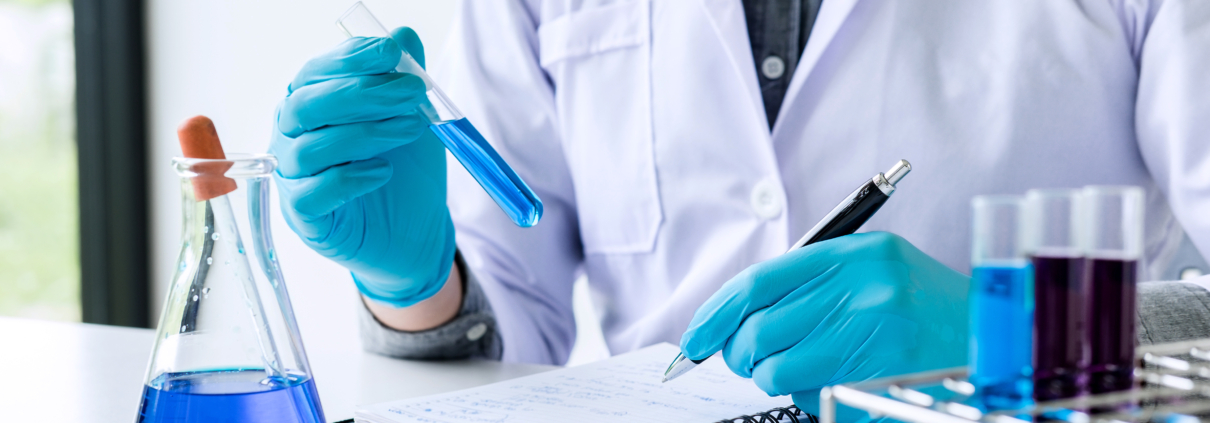Analytical Testing for Bioabsorbable Polymer Medical Devices: In-Vitro Degradation Studies
Bioabsorbable polymers were first introduced in the 1960s and have gained traction in the use of medical devices due to their ability to be safely resorbed; thus, leading to a reduction in complications typically observed with the long-term use of foreign material in the human body. These materials are unique in that they can be tailored to a specific application or intended use through various processing techniques to alter their material and physical properties, as well as their degradation profiles. These processing techniques range from different manufacturing processes and sterilization methods to the inclusion of additives during the synthesis of the polymer or during the manufacturing process. Throughout literature, it is noted that these processing techniques can drastically alter the bioresorbable polymers’ properties and degradation profiles; thus, it is imperative that the material and physical properties of the material be captured in a physiologically relevant environment through custom in vitro degradation studies.
At Poly-Med, Inc., we offer a variety of services to characterize the properties and degradation profiles of bioabsorbable medical-grade polymers, components, and devices. These services range from creating custom biomedical solutions to performing analytical evaluations. Poly-Med’s expertise in bioabsorbable polymer analytical evaluations has allowed us to become leaders in performing custom in vitro degradation studies in simulated and controlled environments. Utilizing ASTM standards, primarily ASTM F1635 (Standard Test Method for In Vitro Degradation Testing of Hydrolytically Degradable Polymer Resins and Fabricated Forms for Surgical Implants), the degradation rates and changes in material and physical properties can be characterized to provide an understanding of how the polymer will behave in a physiologically relevant environment. Most importantly, we are able to characterize the molecular weight, strength retention, and mass loss profiles over a designated period of time to construct the degradation profiles.
PMI’s medical-grade bioabsorbable polyester-based polymers typically demonstrate strength loss prior to exhibiting complete mass loss, as depicted in Figure 1. Initially, when these types of implants are placed in an in vitro environment, the implant will interact with the surrounding water molecules leading to water absorption and penetration in the implant itself. While this process is complex, these water molecules will penetrate the implant, which will lead to the polymer chains undergoing hydrolytic degradation cleaving into smaller and smaller chains. Material properties, as well as material processing (e.g., annealing procedures, implant dimensions, etc.), can influence degradation behavior, including monomer content, molecular weight, hydrophilicity, crystallinity, phase microstructure, and thermal properties.

As PMI’s polyester-based polymers undergo bulk erosion, degradation initially occurs within the amorphous microdomains of the polymer (Figure 2). As the degradation process ensues, the implant will lose its molecular weight, which leads to a loss in the material’s strength. This will ultimately lead to the complete mass loss of the polymer over time, as the implant remains exposed to the in vitro environment.

As each implant displays different strength retention and mass loss profiles, in vitro degradation studies provide the ability to accurately characterize the polymer material’s response in a physiological in situ environment; as well as provide an understanding of the effects of various manufacturing processes on the materials’ strength retention and mass loss profiles.
As degradation profiles for these polymers can range from days to years, it can be necessary to characterize the material’s degradation profile along with material and physical properties at an accelerated rate. This can be accomplished by performing in vitro degradation studies at an increased temperature of 50°C compared to the standard temperature of 37°C. By elevating the study’s temperature, the strength retention and mass loss profiles are able to be evaluated and characterized in a shorter duration than compared to the real-time monitoring performed at 37°C. When degrading at elevated temperatures, a specific polymer’s thermal properties (i.e., glass transition temperature and melting temperature) should be assessed as these properties can significantly alter degradation behavior. Despite providing a quicker timeframe in capturing the degradation profile, in vitro degradation studies should always be conducted at 37°C to ensure an accurate representation of the real-time response under physiological conditions. As degradable polymers are evaluated for new implantable devices, continuous improvement in the standardization for characterizing degradation behavior is essential. Though ASTM F1635 continues to be the go-to guide for researchers, considerations for accelerated in vitro testing and theoretical modeling may assist in establishing a more robust methodology when evaluating bioabsorbable implants for human use.
Contact us today to set up your custom in vitro degradation study!



